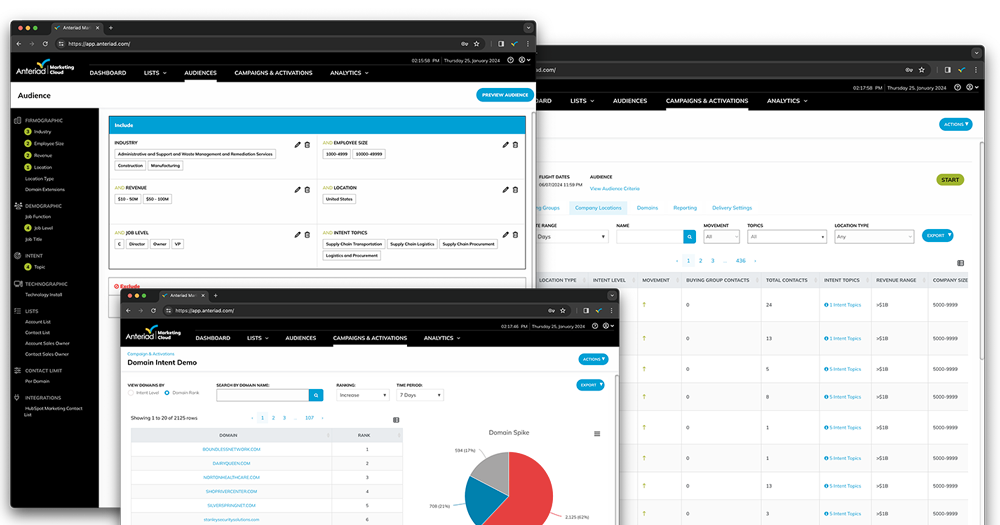4 Steps to Build Your Optimal Audience
In an ideal world, buyers would contact potential vendors as soon as they decided to purchase a solution. Unfortunately, that’s not the world we live in.
In 2015, Google found that the average B2B buyer conducted 12 searches before even engaging a specific brand’s website – let alone talking to a salesperson. And that trend has continued.
Forrester found that in 2021, the average purchase involved 27 interactions overall, which included gathering information from “almost anywhere.”
This reinforces what we already know: We can’t wait for customers to find us – we have to go to where they are. And to do that, we need to know who our target customers are.
Sometimes, this feels like an impossible task. But it doesn’t have to be that way. In fact, your optimal B2B audience is only four steps away.
1. Start with what you have
You may already have more B2B audience data than you think. We recommend getting information from the following places:
Your current clients.
To truly understand the modern B2B customer, you need a 360-degree view – not just their rational business decision making processes, but also their emotional consumer sides. The more you can learn about each person – including their demographics (e.g. age, education, seniority) and psychology (e.g. goals, challenges, preferences) – the more you can understand what they care about and what they’re looking for in a solution.
Your past campaigns.
Who came in through them? Who engaged with your content and spent time exploring your website? Who talked to your sales team?
Note: As long as you were able to get a list of clients, you can filter out the people who became customers; they’re already accounted for.
Your events.
This includes virtual events. Who has been registering for your webinars? If you had a virtual conference, who attended? If you’ve been able to have in-person events, who did your team talk to? The pandemic has changed the information you’re getting from events (it’s typically more top-of-funnel traffic now), but it’s still helpful to know.
Your pipeline.
You probably have a list of leads you’re currently trying to convert. Be sure to pull that in, too. This is also a great way to know who your current campaigns are resonating with.
Note: You may not be able to get all of the information we’ve outlined here, and that’s ok. Even one of these four lists will be a great starting point.
2. Add psychographic data
You know that these people can benefit from what you offer, so start by creating profiles based on their demographics. What industries are they in? How big are their companies? What’s their annual revenue? If you can get it, find out who was involved in the purchase decision and what their job titles were.
3. Embrace intent data
Intent data is the piece that will take your list from good to great. It reveals the research patterns of your prospects and helps you see which ones are actively researching solutions.
When you layer intent data with the firmographic information you compiled in step one, you’ll start to see trends. These trends are going to be the backbone of your audience. They’ll help you to refine your audience to prospects and companies who are a good match for what you’re offering.
4. Right-size your audience
Sometimes, this is the hardest part. You want to make sure that you have a good number of people in your audience, but you don’t want too many people.
Start with the list of prospects with the highest intent. This group is your top priority. From there, strategically broaden your net until you reach the audience size you’re looking for.
Remember:
These steps are straightforward, but that doesn’t mean they’re simple. If you’re looking for a partner to help you create this list, we’re here for you!
SOME OPTIONS TO CONSIDER:
- We can provide intent data.
- We can build an audience for you.
- We can manage an entire marketing campaign for you.
